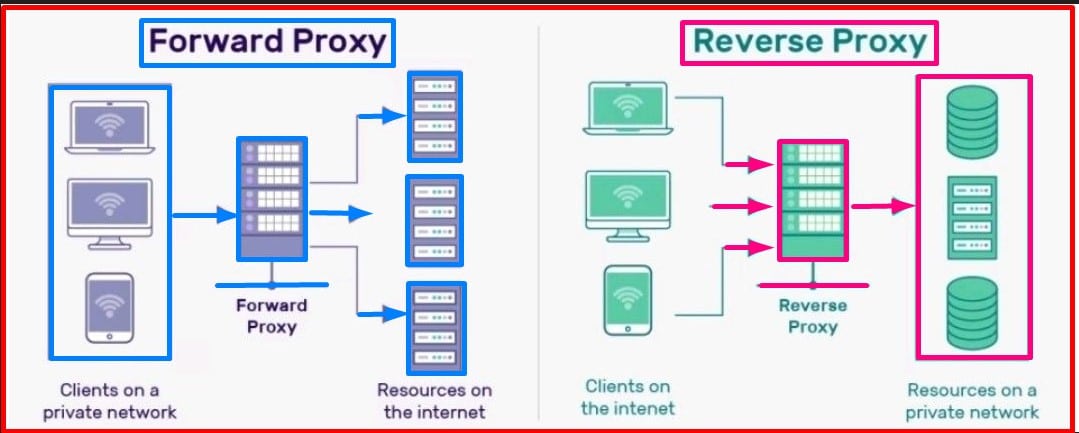The primary difference between forward and reverse proxies are their position in the network architecture.
A forward proxy sits between a client and the internet, while a reverse proxy sits between a client and a server.
Another key difference is their purpose.
A forward proxy is primarily used to provide privacy to the client and bypass network restrictions. In contrast, a reverse proxy is used mainly to improve the server’s performance, security, and scalability.
What are the Benefits of Reverse Proxy?
1. Load Balancing
2. Caching
3. SSL Termination
4. Threat Prevention
5. Scalability
6. Compression
7. Routing
8. Monitoring and Logging
9. Flexibility
Is WAF a Reverse Proxy?
Yes, Web Application Firewalls (WAFs) can be considered a type of reverse proxy. WAF helps to intercept traffic before it reaches the server, the WAF can help prevent malicious requests from reaching the origin server.
